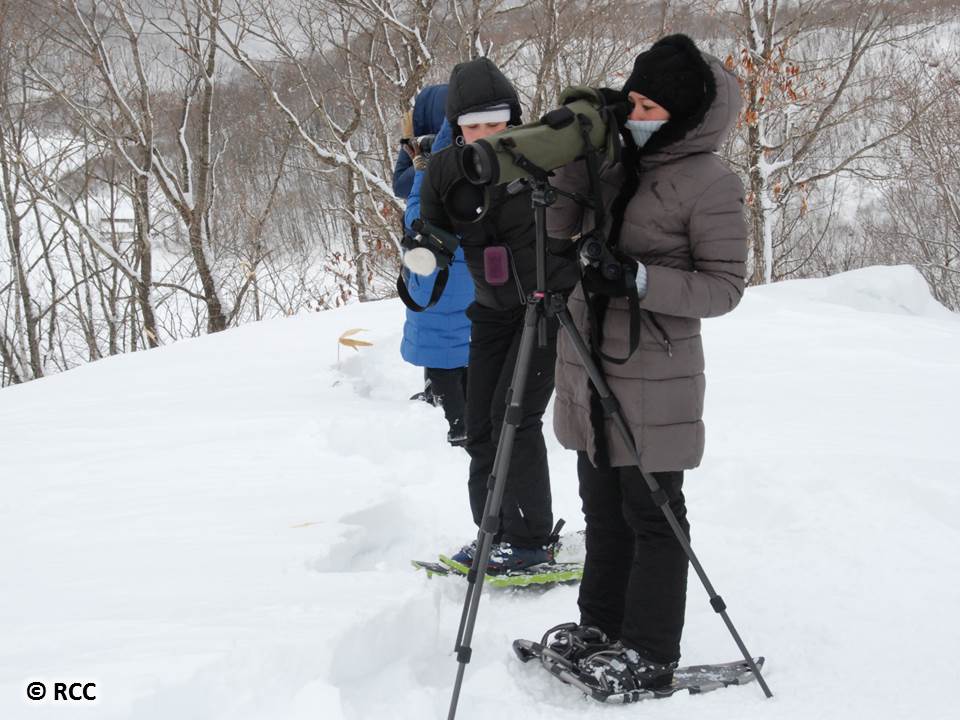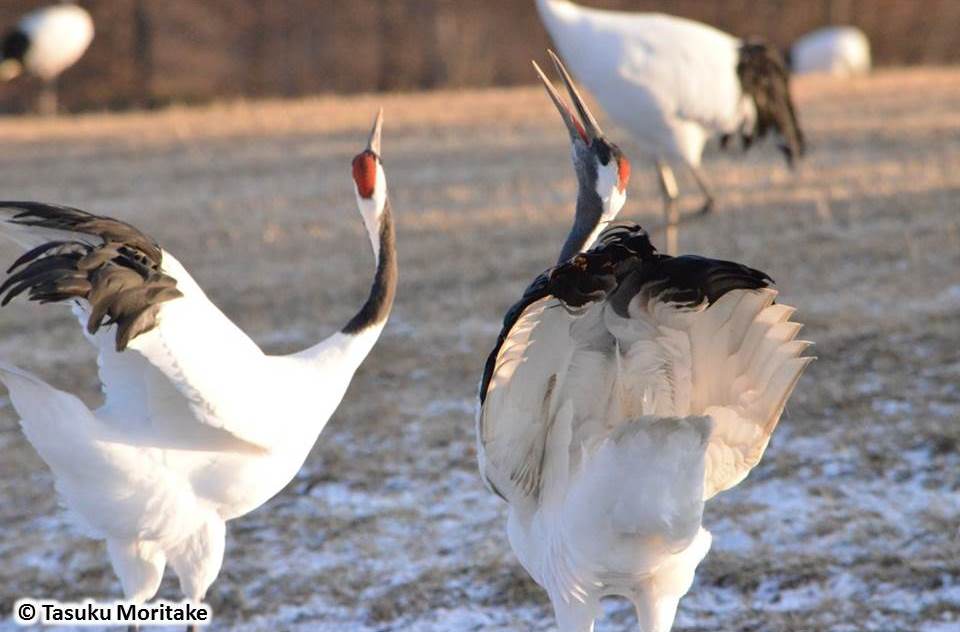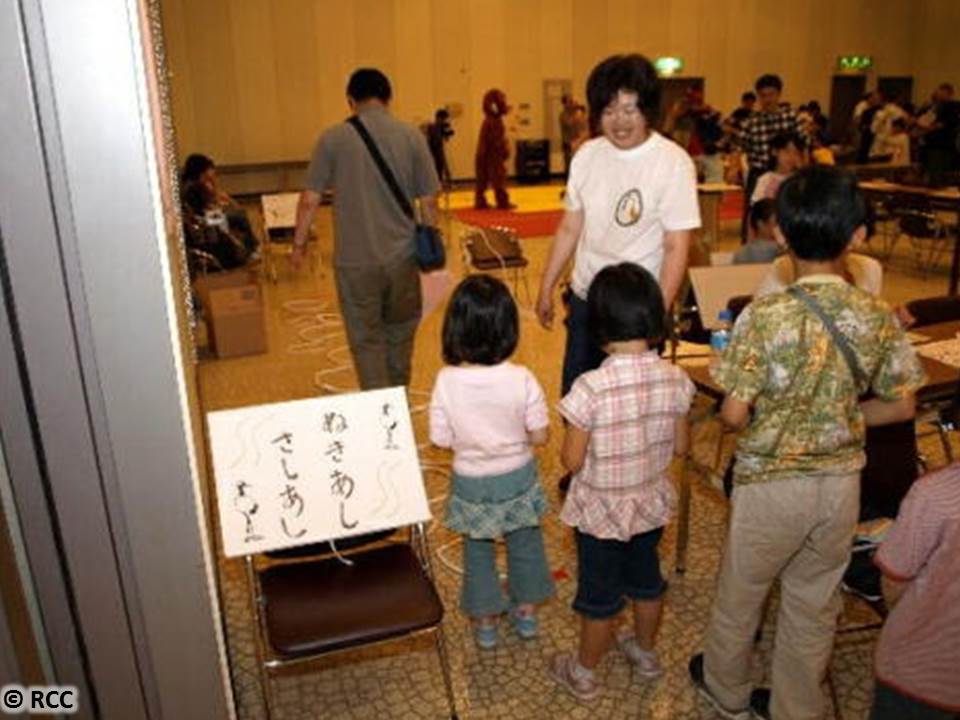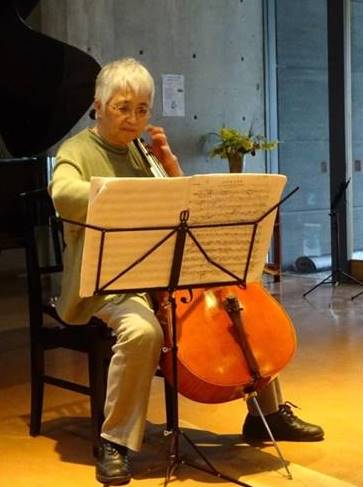
Volunteer
Activities of the RCC are supported by many volunteers. Each winter about 60 volunteers join the winter census. Each summer about the same number of volunteers help capture chicks for banding. There are many other ways to volunteer for the RCC. Some volunteers look for banded cranes on weekends, and others join surveys of nesting and roosting habitats. Volunteers also join our projects in extension/education as well as in habitat restoration.

Enjoy the great outdoors
Volunteering for the RCC takes you into wetlands in summer and across snowfields & snow covered hills in winter.
Volunteering for the RCC takes you into wetlands in summer and across snowfields & snow covered hills in winter.
 Get to know the cranes
Get to know the cranes
Volunteering for the RCC is a great way to learn about the cranes & wetlands and to see the cranes.

Be rewarded
Why not join the RCC community by becoming one of our volunteers. No experience is necessary. Contact us
Why not join the RCC community by becoming one of our volunteers. No experience is necessary. Contact us
Meet some of our volunteers

Masako Inoue (Steering Committee)
I have been the editor of the TKG News since 2011. The TKG News is a short newsletter for volunteers who participate in the winter census and banding. It is published twice a year and summarizes the results of the census and banding. Mostly, we put bands on chicks, but sometimes we put bands on older cranes that are released after being rescued. It is a great joy to see these cranes when they are found with their partners and offspring some years later. We are able to tell individual cranes apart by reading the numbers on the bands, and sometimes I feel that I could tell differences in personality among the banded cranes.
I have been the editor of the TKG News since 2011. The TKG News is a short newsletter for volunteers who participate in the winter census and banding. It is published twice a year and summarizes the results of the census and banding. Mostly, we put bands on chicks, but sometimes we put bands on older cranes that are released after being rescued. It is a great joy to see these cranes when they are found with their partners and offspring some years later. We are able to tell individual cranes apart by reading the numbers on the bands, and sometimes I feel that I could tell differences in personality among the banded cranes.

Tasuku Moritake
I graduated from high school in Kushiro in March 2016. I became interested in the red-crowned crane when I learned about the Kushiro Wetland in the fourth grade. I started observing a breeding pair of the cranes on weekends when I was in the eighth grade. When I was in the ninth grade, I learned about activities of the RCC from Mr. Momose and joined RCC’s winter census. For me the best thing about volunteering for the RCC is to meet other volunteers. They are a mixed bunch of good people all passionate about the red-crowned crane although they vary greatly in their age, profession, and birth place. I have been learning about the cranes as well as many different aspects of life from these people. The learning experience has been invaluable. I have a keen interest in observing cranes with bands, and I have also participated in banding of chicks. Two summers ago, I held a chick in my arms for the first time, and I will never forget the beating of chick’s heart that I could feel through the feathers and clothing. I felt the dynamic pulse of life that I have never been able to notice by observing cranes from a distance. Through the activities I do with the RCC, I have learned that not everyone thinks favorably about red-crowned cranes. I am yet unsure of what I could do to help them change their minds. However, I am reassured that there are people who have been striving towards the long-term coexistence of the cranes and local residents, and I am proud to be a member of the RCC community.
I graduated from high school in Kushiro in March 2016. I became interested in the red-crowned crane when I learned about the Kushiro Wetland in the fourth grade. I started observing a breeding pair of the cranes on weekends when I was in the eighth grade. When I was in the ninth grade, I learned about activities of the RCC from Mr. Momose and joined RCC’s winter census. For me the best thing about volunteering for the RCC is to meet other volunteers. They are a mixed bunch of good people all passionate about the red-crowned crane although they vary greatly in their age, profession, and birth place. I have been learning about the cranes as well as many different aspects of life from these people. The learning experience has been invaluable. I have a keen interest in observing cranes with bands, and I have also participated in banding of chicks. Two summers ago, I held a chick in my arms for the first time, and I will never forget the beating of chick’s heart that I could feel through the feathers and clothing. I felt the dynamic pulse of life that I have never been able to notice by observing cranes from a distance. Through the activities I do with the RCC, I have learned that not everyone thinks favorably about red-crowned cranes. I am yet unsure of what I could do to help them change their minds. However, I am reassured that there are people who have been striving towards the long-term coexistence of the cranes and local residents, and I am proud to be a member of the RCC community.
タンチョウ保護研究グループタンチョウ保護研究グループ
〒085-0036
北海道釧路市若竹町9-21
TEL 0154-22-1993
FAX 0154-22-1993
Red-crowned Crane Conservancy
9-21 Wakatake-Cho,
Kushiro, Hokkaido 085-0036
JAPAN
TEL +81-154-22-1993
FAX +81-154-22-1993
あなたは
番目の訪問者です。